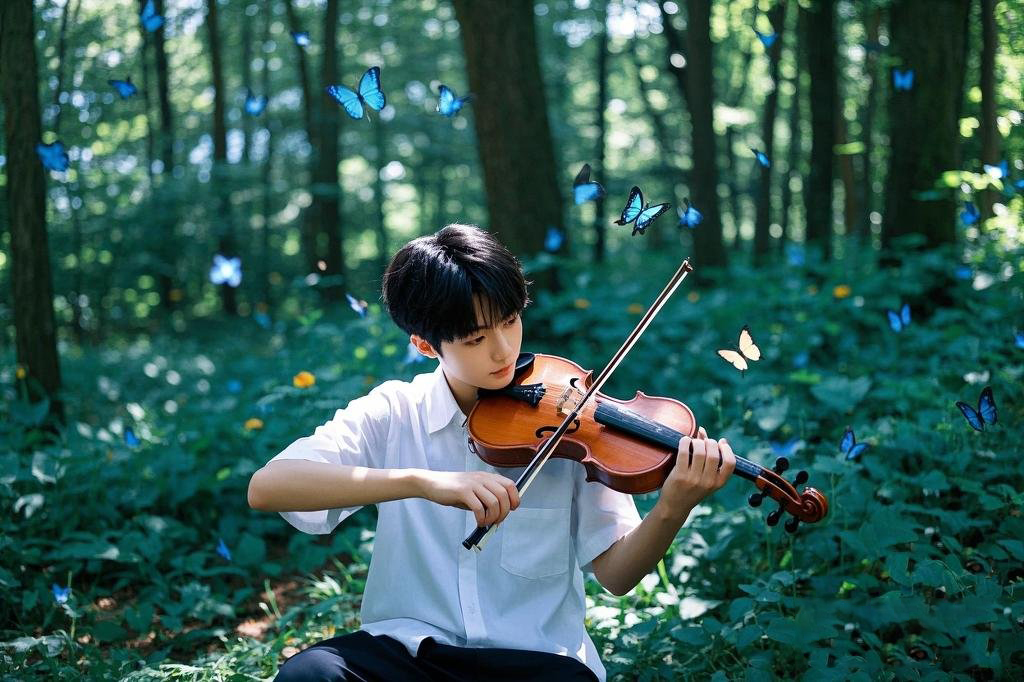Technical Mastery_ Chinese Approach to Bow Hold and Finger Placement
Shang Kun 2025-05-30 141
Technical Mastery: Chinese Approach to Bow Hold and Finger PlacementIn the world of violin playing, few aspects are as crucial as bow hold and finger placement. Every violinist, whether beginner or professional, is constantly seeking ways to refine these essential techniques. Yet, there’s a distinct approach in the Chinese tradition that elevates this foundational skill to an art form. The Chinese approach doesn’t just focus on the technicalities; it aims to create a deeper connection between the player and the instrument, offering a harmonious blend of precision and emotion.
But here's the twist—many violinists, especially beginners, often struggle to achieve a natural and relaxed bow hold. The common misconception is that once you hold the bow correctly, you’ve mastered it. The truth? It’s not just about positioning the fingers; it’s about creating a fluid motion, a seamless flow that aligns with the music itself. Without the right finger placement, even the best bow holds become rigid, and the sound quality suffers.
So, what makes the Chinese approach to bow hold and finger placement so unique? It's all about the balance between control and relaxation, the intricate understanding of how each finger interacts with the bow. It’s not simply about following a formula; it’s about adapting the technique to your own body and musical expression. More than just physical precision, the Chinese method encourages a deeper connection to the music, ensuring that each movement of the bow feels effortless yet powerful.

But here’s the kicker: if you’re stuck in the same habits of bow hold or finger placement, it can be hard to break free. Even when you know the theory, putting it into practice feels like a constant challenge. Many players get caught up in maintaining a ‘perfect’ technique rather than listening to the music, resulting in a mechanical sound. That’s where the Chinese method comes in—not just as a technique but as a philosophy that harmonizes the body, bow, and music.
What makes this approach stand out is the deliberate focus on the positioning of each finger. In the Chinese tradition, there’s a strong emphasis on the idea that every finger plays a unique role in the bowing process. The pinky, often overlooked in Western techniques, takes center stage in the Chinese method. Its positioning can significantly affect the fluidity and precision of the bowing motion. If you’re not incorporating this in your playing, you might be missing out on the ease and grace that characterizes Chinese violin playing.
Not only does this method prioritize control, but it also teaches violinists to let go of unnecessary tension. The key to a natural sound lies in relaxed, controlled movements, which leads to a more expressive performance. The subtlety of finger placement ensures that the bow doesn’t just produce sound, but resonates with emotion, creating a perfect balance between technique and artistry.
As you explore this technique, you may notice that your bowing improves, but the real transformation occurs when your finger placement and bow hold become instinctive. The fluidity of the Chinese approach allows for a sense of freedom within the structure of classical violin techniques, making it a perfect method for any violinist aiming to improve their playing while maintaining musical expression.
Incorporating the Chinese approach into your practice routine could lead to a breakthrough in how you feel when playing the violin. It’s not just about ‘doing it right’; it’s about letting your technique guide your musical expression in the most natural, fluid way possible. Don’t just strive for technical perfection—aim for musical freedom and emotional depth, and you’ll notice how your playing transforms into something truly unique.
If you're looking for guidance on how to implement these techniques and refine your violin skills, consider working with an expert. Shang Kun, a Chinese violin teacher, offers one-on-one lessons both online and offline. His deep understanding of Chinese violin techniques can help you master bow hold and finger placement, elevating your playing to the next level.
